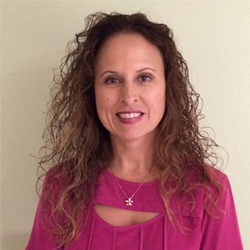Clinical Researcher—December 2019 (Volume 33, Issue 10)
PI CORNER
Elizabeth Weeks-Rowe, LVN, CCRA
In the ever-shifting environment of priorities and processes in today’s complex clinical research landscape, one constant is the need for investigator oversight of studies. The unshakable commitment to patient safety and credible data practices held by responsible, involved principal investigators (PIs) perpetuates ethical study conduct.
Though consistency is critical in clinical research models, the diversity of investigational sites prohibits standardization of investigator oversight. Oversight practices differ according to the investigational site model, team dynamics, and the delegation required to manage the study at that site. No algorithm exists to define appropriate oversight in terms of levels of different activities (number of patient visits attended, number of adverse events [AEs] attributed per patient, etc.).
Appropriate oversight is driven by active—not passive—investigator involvement, frequent communication with trusted delegates, engagement with study patients, and real-time appraisal of study/team status. Whether the PI is a single practitioner with a small research practice or leads a large study team with contributing sub-investigators and support staff, his or her strengths in leadership and collaboration impact the results.
Focusing in On Commitments
Among other commitments found in Section 9 of Form FDA 1572 from the U.S. Food and Drug Administration, which must be correctly applied to the unique infrastructure of each investigational site, are the following:
I agree to conduct the study(ies) in accordance with the relevant, current protocol(s) and will only make changes in a protocol after notifying the sponsor, except when necessary to protect safety, rights, or welfare of subjects.
I agree to personally conduct or supervise the described investigation(s).
I agree to ensure that all associates, colleagues, and employees assisting in the conduct of the study(ies) are informed about their obligations in meeting the above commitments.
In signing the 1572, the investigator officially indicates his/her commitment to the serious business of study oversight to the regulatory authorities. The mantle of oversight is heavy, but manageable with delegated staff functioning in collaboration with those commitments.
Different Models, Same Mission
The most common investigational site models are the academic medical center, the single or multispecialty private medical practice with a research department, and the dedicated research site/site group.
The practices may differ in size and scope, but the intentions concerning study quality are clear: To ensure investigator involvement.
A PI/professor at an academic medical center, like in the following example, may lead a team of trained investigators working in unison to fulfill oversight responsibilities.
Joel M. Gelfand, MD, MSCE, is professor of dermatology and of epidemiology, vice chair of clinical research, medical director of the Dermatology Clinical Studies Unit, and director of the Psoriasis and Phototherapy Treatment Center at the University of Pennsylvania Perelman School of Medicine. A renowned PI, he describes oversight practices relative to trial complexity and specialty by noting, “To some degree it depends on the complexity of the trial and who the sub-investigator is. For lower risk trials when my sub-investigator is a board-certified dermatologist with experience in research, I review the source docs for all the visits (made simple, as we are on EMR), and we have a standing weekly meeting where trial subjects are discussed. Of course, I am otherwise available 24-7 via cell phone if an urgent issue needs to be addressed.”
Dr. Gelfland describes additional involvement in these terms: “For a more complex trial, I typically see the patient with the sub-investigator at screening and baseline, and then as needed if there are AEs occurring. Of course, if the protocol requires a single investigator for all visits, then I see [the patients] at all visits.”
Meanwhile, the dedicated research site model is structured for 100% trial conduct, as opposed to trials being a “side business,” the way they are in a fee-for-practice physician’s office. The oversight process can be as simple as a sole practitioner (PI) seeing the majority of study patients, or the larger center contracting with several physician investigators (PIs and sub-investigators) who share patient care. The successful research site follows an oversight process that prioritizes communication frequency and transparency between the PI and staff.
Daniel A. Perez, BS, CCRP, director of clinical research operations at MACRO trials in Los Angeles, Calif., addresses PI oversight practices that require a commitment of all team members to succeed, saying, “For our team, this means that the PI and study coordinator have regularly scheduled 1:1 meetings (weekly or biweekly). The frequency of these 1:1 meetings is set considering the trial’s complexity, volume of enrolled patients, or anticipated volume of adverse events.”
Perez explains that wider, team-wide meetings are held on monthly intervals after the PI and study coordinator have had a chance to assess and vet the information that needs to be disseminated, or after opportunities for improvement have been identified for broader discussion. “We take this a step further by preparing meeting slides [and] agendas, [and by] maintaining detailed attendance records of our study team meetings.”
Perez further describes appropriate delegation practices that support PI oversight. “We designate what we call a “super sub-investigator” who is our go-to for coverage if the PI has a slammed clinic schedule or is unavailable. At the beginning of the trial, we then facilitate a meeting between the PI and sub-investigator where a few things get ironed out. Those items include:
- Seeking alignment on any assessments that may not be very straightforward (i.e., non-standardized assessments left to the investigator’s individual call);
- Establishing lines of communications and preferences (cell phone calls/texts, e-mail, face-to-face, etc.);
- Developing a plan for co-managing any potential AEs, with final say coming from the PI, but the sub-investigator being empowered to act in the PI’s absence; and
- Ensuring that sub-investigators are present at team-wide meetings either in person or via video conferencing.
Further Considerations
An FDA guidance for industry on “Investigator Responsibilities—Protecting the Rights, Safety, and Welfare of Study Subjects” describes the framework for ethical oversight in terms of the appropriate supervisory, delegation, and communication/training responsibilities the investigator should fulfill. Section III of the guidance covers Clarification of Certain Investigator Responsibilities, and its first subsection focuses on Supervision of the Conduct of a Clinical Investigation. According to that subsection, “The investigator should develop a plan for the supervision and oversight of the clinical trial at the site. Supervision and oversight should be provided even for individuals who are highly qualified and experienced.”
The ongoing goal of a successful investigational site is for all its personnel to work in concert to achieve ethical oversight practices.

Elizabeth Weeks-Rowe, LVN, CCRA, (elizabethwrowe@gmail.com) works in site selection and education in the contract research organization industry. She last wrote for Clinical Researcher in August 2019’s “Don’t Judge a Site by its Cover.”



